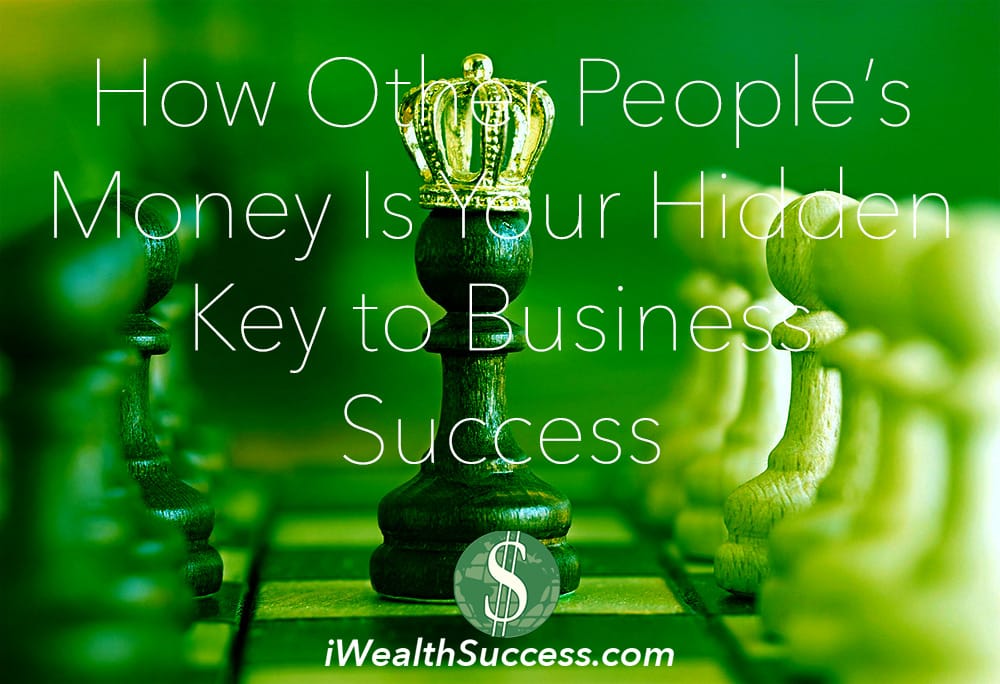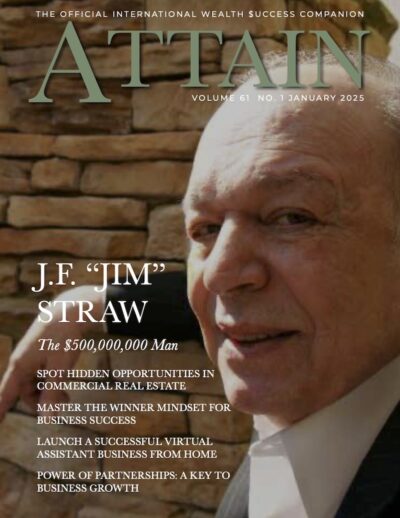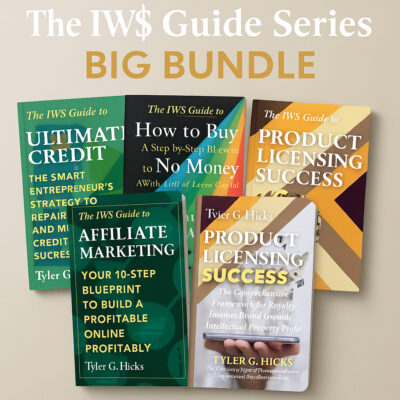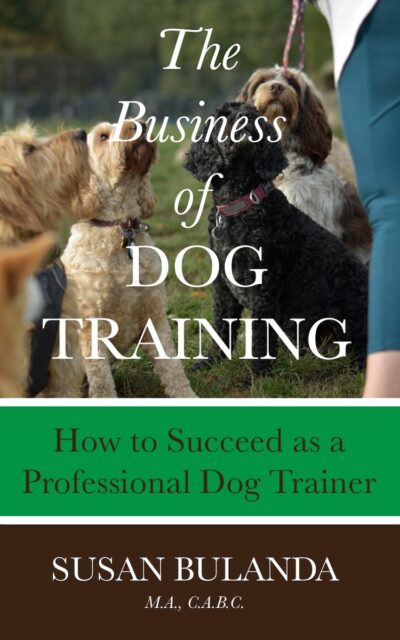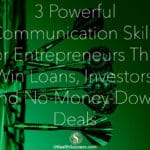Every entrepreneur dreams of the breakthrough. The moment when the dream turns into ownership, when the vision turns into control, when income begins to flow steadily and reliably. The path to that breakthrough often feels locked, hidden behind walls of capital and credit.
Yet there is a key. A hidden key that the most successful wealth builders have always used. It is not their savings. It is not their inheritance. It is Other People’s Money.
OPM has built empires, but it has also built the fortunes of everyday entrepreneurs who refused to wait until their own bank accounts were “big enough.” It has turned clerks into owners, managers into moguls, and ordinary people into AWBs—Advanced Wealth Builders—who command cash flow and control assets.
This is the hidden key that Tyler G. Hicks placed in the hands of readers decades ago.

And it is still as powerful as ever.
The Hicks Legacy of OPM
Tyler G. Hicks popularized—if not outright coined—the term OPM. He taught readers from Brooklyn to Bangkok that they did not need to be rich to acquire assets, businesses, or real estate. They needed something else entirely: the skill to structure a deal and the ability to persuade others to provide the funds.
This was Hicks’s genius. He showed that the wealth game is not about hoarding pennies until you have enough. It is about mastering the flow of capital that already exists in the world and directing it into your opportunity. Money is everywhere. Investors, sellers, banks, private lenders, partners—they are all looking for returns, for security, for a way to multiply their funds.
When you learn to present your deal so that it meets those needs, the money comes to you. That is the hidden key. Not cash in hand, but the ability to unlock the cash in someone else’s.
The Million-Dollar Bakery Story
Consider Alan, an ordinary man with extraordinary determination. He found a chain of three bakeries for sale, each profitable, each with steady foot traffic. The owner was retiring and wanted $1 million. Alan had less than $5,000.
Most would have walked away. Alan pressed forward. He asked questions. He studied the numbers. Then he structured a deal that pulled OPM from three directions:
- The seller carried 70% of the price through owner financing.
- A private investor, impressed with the bakery’s cash flow, supplied another 20%.
- Alan used his $5,000 for closing costs and legal fees.
That was it. He was now the owner of a million-dollar enterprise producing over $200,000 in profit annually.
What was his true investment? Not money. Not savings. It was knowledge and the courage to use OPM.
Why OPM Is Faster, Safer, and More Powerful
When you rely on your own savings, you grow slowly. You buy one property, one business, one small piece at a time. Years pass before momentum builds.
When you rely on OPM, you leap. You acquire larger assets. You create streams of income that fund the next deal. You are never limited by your own wallet—you are powered by the combined strength of many.
And here’s the overlooked truth: OPM is often safer. When you spread the risk across sellers, lenders, and investors, you carry less personal exposure. You control more while risking less. That is why the bold entrepreneurs—the true BWBs—move faster and build larger portfolios than cautious savers ever will.
The Loan Officer Who Said Yes
Denise wanted to buy a small-town hotel. The asking price was $350,000. She walked into the bank, paperwork in hand, and sat down with the loan officer. He flipped through the file and frowned. “We don’t usually finance hospitality without more money down.”
That was the wall. Most applicants would have nodded, packed up, and left. Denise leaned forward. “May I tell you a story about this hotel?”
She described the hotel’s history, the loyal guests who returned every year, the weddings already booked six months in advance. She painted a picture of transformation: a tired building becoming the premier wedding destination in the county. She spoke of her background in events, her passion, her plan.
The banker set his pen down. He started asking questions. Not about her credit, but about her vision.
Three weeks later, the loan was approved. The hotel was hers. Her hidden key was not collateral. It was OPM unlocked by her communication.
The Three Primary Sources of OPM
Other People’s Money is everywhere. To use it, you must know where to look.
- Owner Financing – Many sellers are willing to carry the note. They want the sale, they want income, and they often trust the buyer who shows vision. This is one of the simplest and most direct paths to OPM.
- Private Lenders – Individuals, small groups, or family offices who want returns. They are everywhere—in investment clubs, in your local community, sometimes even at your dinner table. Show them a solid deal, and they will supply the funds.
- Institutional Loans – Banks, credit unions, and alternative lenders. They fund billions every year. When you present your deal with clarity and confidence, they open their vaults.
The beauty of OPM is in the blend. Often, the best deals are structured from two or even all three of these sources working together.
Maria’s Apartment Building
Maria was an ambitious BWB who discovered a 12-unit apartment building. The seller wanted $600,000. Maria had none of it.
She invited a local private lender to walk the property with her. As they toured, she showed him the current rents—$650 a month. She showed him market rents—$900. She pointed out the cosmetic upgrades that would cost pennies but add thousands in value.
The lender saw it. He felt it. He could practically smell the profit in the air. He agreed to finance the deal. Maria closed with OPM and used the building’s cash flow to pay down the loan.
That is how bold entrepreneurs multiply their holdings—by showing others the opportunity so clearly that they want to put in their money.
Building Freedom After the Acquisition
When you buy with Other People’s Money, you unlock ownership. Yet the smartest BWBs go further. They don’t just acquire businesses—they structure them so others run the daily operations.
One reader used OPM to acquire three laundromats. Instead of standing behind the counter himself, he hired managers. Each location produced steady cash flow, while his time remained free to search for the next deal.
That is the real power of OPM. It is not only about controlling assets without tying up your own savings. It is about creating freedom—freedom of time, freedom of choice, freedom to multiply.
Action Steps to Start Using OPM Today
To begin unlocking your hidden key, start with these steps:
- Identify motivated sellers. Retiring owners, landlords tired of tenants, heirs with inherited property.
- Prepare a five-minute pitch. Show why the deal is profitable, how the money will be repaid, and why the opportunity is secure.
- Build your investor network. Meet bankers, attend local business meetups, connect with investors. Relationships matter.
- Track your reputation. Deliver on promises. Word spreads. The more reliable you are, the more OPM flows your way.
Your Hidden Key Is Waiting
Other People’s Money is not a gimmick. It is not a shortcut. It is the hidden key used by the world’s boldest wealth builders.
Alan’s bakeries. Denise’s hotel. Maria’s apartments. Jason’s laundromats. All different industries. All different strategies. One thing in common: none of them relied on personal savings. They relied on OPM.
This key is in your hands now. Use it, and you will find doors opening—doors to businesses, properties, and opportunities that seemed locked tight. As Tyler G. Hicks often said:
“Money follows opportunity. Show the opportunity, and the money will follow you.”
EXPLORE MORE . . .
-
BB-1 : The Ultimate Tyler G. Hicks Wealth-Building Library (An IW$ Big Bundle)
Original price was: $256.00.$197.00Current price is: $197.00. -
BB-2 : The IW$ Guide Series Big Bundle
Price range: $40.00 through $64.00 -
Business of Dog Training, The
Price range: $8.00 through $16.00

